If you’ve watched one (or three, or a dozen) of our product review videos, you might have wondered: How exactly does the Sleepopolis team figure out what makes a product good or bad? Well, that’s a great question! Allow me to fill you in.
Below, we’re going to discuss our Sleepopolis reviewing methodologies, explain the tests we use, and provide some insight into how we utilize the data we collect to make our recommendations.
General Methodology
One of the things that sets us apart from other reviewers on the Internet is our preference for personally testing out the products we include on our site. We value a hands-on approach because it allows us to assess items on our own terms. We use a variety of tests and processes that give us (and you) a full picture of what a product is actually like. At the end of the day, we believe the best way to understand a mattress (or pillow or blanket or sheet) is to roll up our sleeves and feel it for ourselves.
This is invaluable for a number of reasons, but perhaps the most important is it allows us to figure out the pros and cons of every single product. We want you to know all the details about whatever item we’re testing (and you may be considering buying), so we’re not going to hold back. In our opinion, there’s no such thing as a “good” or “bad” product, but simply ones that are better for certain individuals than others.
When it comes to where we test our products, sometimes our testers do it right at home, which allows them to spend a good amount of time with a mattress, pillow, sheet set, or other sleep accessory to figure out how it functions in the long term. Other times, the products get sent right to our mattress lab in Charlotte, North Carolina. Either way, the product goes through an extensive battery of tests that we’ll cover in a bit.
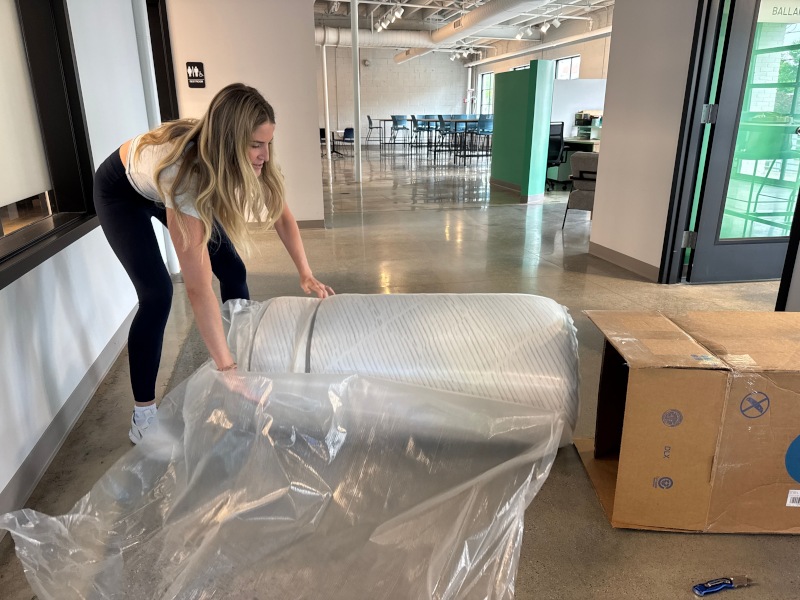
The Sleepopolis Expert Network
In addition to developing and utilizing a rigorous methodology for testing out the products on our site, we also rely on an extensive Expert Network of physical therapists, doctors, psychologists, neurologists, dieticians, other medical professionals, and writers to verify the information we put out there.
That means that if we claim a particular mattress could be great for those with back pain, we might chat about it with physical therapist Dr. Joe Tedesco to ensure the statement’s validity. Dr. Tedesco even comes into our mattress lab from time to time to test out the beds himself and offer up his opinion. And when it comes to writing about how the mattress you choose can affect your overall sleep health, we like to check in with Sleepopolis Chief Medical Advisor Dr. Raj Dasgupta before hitting publish.
By tapping into these fantastic resources, we’re able to create dynamic content that’s not only interesting, but powered by actual professionals in the sleep space.
Mattress Reviews
Now let’s get into some of the details of how we review mattresses. Below, I’m going to walk you through our tests, explaining why we use them and how we interpret the results they yield.
Firmness
Firmness is an important component of a bed’s feel, as it will tell you how much support and pressure relief you’ll likely get on a mattress. We like to rate mattresses on a scale from 1 to 10 for firmness, using 6.5 as the standard for medium firm. Anything below that number is considered soft, while anything above it is considered firm. For each bed, the lead tester personally rates the firmness, asks their coworkers to rate the bed, then averages the scores for a final firmness rating.

And we don’t stop with just a number. If our testers agree that a mattress is soft, then our review is going to explain what’s going on in the bed’s layers to make it that way. If we agree it has a ton of firm support, we’re going to pinpoint where that’s coming from. And with every firmness scoring, we’re going to go over who might benefit from it most.
Pressure Relief
Once we’ve got firmness sorted, it’s time to dive into pressure relief. This section is particularly beneficial for those sleepers who need to alleviate tension, either at the shoulders and hips for side sleepers, at the lumbar region for back sleepers, or at the hips for stomach sleepers. When we review a bed, we want to know exactly where pressure is likely to form, so we can tailor my recommendations to those who might benefit (or really not benefit) from its specific amount of relief.
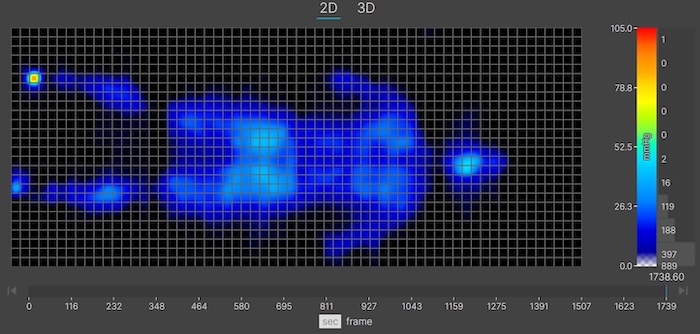
To show where these tension spots might pop up, we use a pressure map. This test involves a specialized mat that uses heat-mapping technology to show where pressure’s building across a tester’s body in various positions. When you see this graphic — or “map” — in our videos or written reviews, you can easily tell where the high pressure spots are (lit up in orange and red) compared to where the low, or no, pressure spots are (lit up in green and blue). While we’ll always describe the pressure we experience on a mattress, this graphic is super-helpful to show where it’s forming.
We also make sure to perform the pressure-map test on testers of all different weight categories and body types — specifically, under 130 pounds, 130–230 pounds, and over 230 pounds. Since more weight puts more pressure on a mattress, it’s important to understand how the bed might vary from person to person regarding feel and pressure relief. Below, you can see our different testers trying out the pressure map.
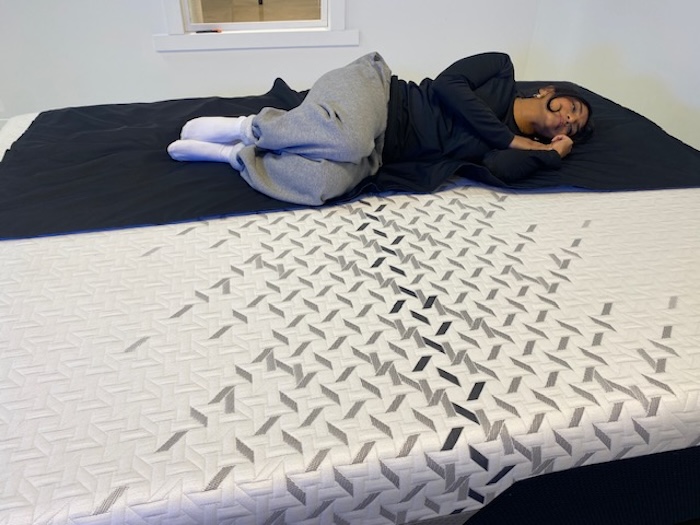

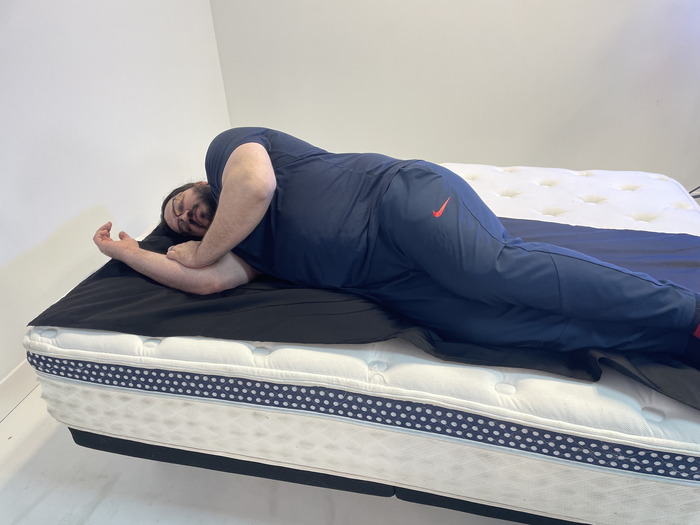
Motion Transfer
Next, we like to assess a bed’s motion transfer, or the amount of motion that’s detectable from one side of the mattress to the other. Though this test is important for all sleepers, it’s especially beneficial for those who share their bed with a partner or pet, as it’ll demonstrate whether or not you’ll be bothered by movements while you slumber.
To gauge a bed’s motion transfer, we conduct several different tests. First is a bounce test, in which we drop a 10 lb steel ball from heights of 4, 8, and 12 inches. Before letting the ball fly free, we set up a seismograph on the other side of the bed to measure the intensity of these bounces, which it does by producing a line graph marking their frequencies.
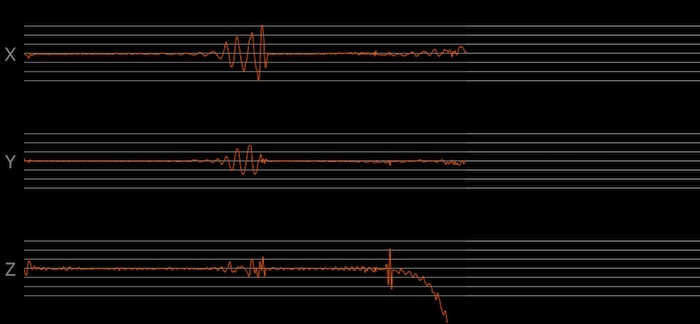
On top of using this graph, we have one of our testers lie on one side of the bed and wear and eye mask and over-ear headphones. Another colleague then gets in bed and rolls around, with the first tester reporting how much of their partner’s movement they can feel. If they can hardly feel anything, the bed is good at isolating motion, but if they can feel significant movement, the bed probably isn’t too great at isolating motion.
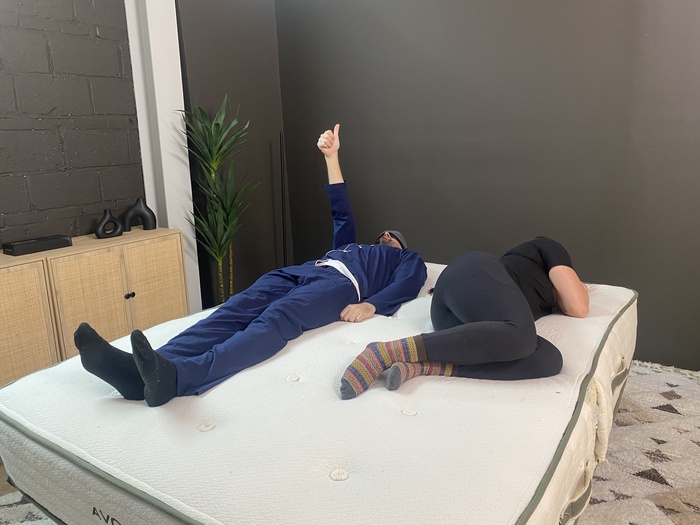
Finally, there’s the water test, where we place a plastic bin of water on the mattress, roll around next to it, and observe how much the water sloshes around. The more still the water is, the better the bed is at isolating motion. Significant ripples indicate high motion transfer.
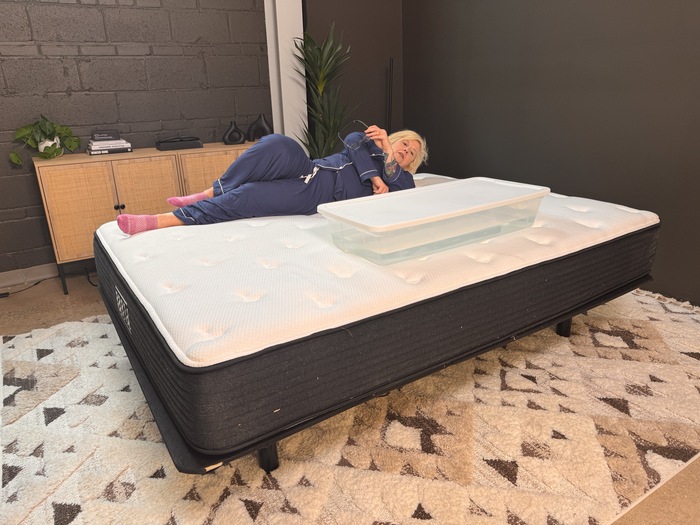
We evaluate all of these tests together in order to better understand how bothersome a toss and turn in the night could be for someone.
Cooling
When measuring a mattress’s cooling capabilities, we take a few different factors into consideration. First, there’s the bed’s construction. As a rule, a mattress with springs in its construction leaves more room for air to flow through the bed. There are of course exceptions to this rule, but in general, if you’re an especially hot sleeper, you’ll want to consider a hybrid or innerspring. Latex is also a naturally cooling material, so something with latex foam may do the trick.
After we’ve looked at a mattress’s construction, we simply lie down on it to see how hot or cooling it feels. Finally, we read its temperature with our thermal gun. This is a device that uses thermal imaging to show how much a mattress heats up after we lie down on it for 5 minutes. If it heats up more than 15 degrees Fahrenheit, we consider the mattress to have poor cooling capabilities. 10 to 15 degrees indicates decent cooling, 5 to 10 degrees indicates good cooling, and less than 5 degrees indicates excellent cooling.
Below, you can see the thermal imaging from the Saatva Rx mattress, both before and after our tester laid down on it.
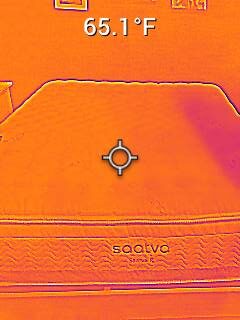
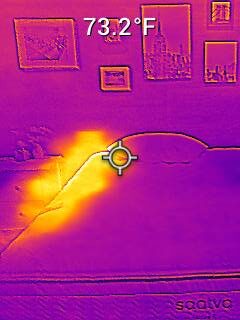
After combining all of the different testing areas, we give the mattress its final cooling score. In the case of the Saatva Rx, its temperature increase indicated good cooling. When combined with its hybrid construction and the fact that we simply felt cooled down while resting on the mattress, we gave the bed a final cooling score of 4.5 out of 5.
Edge Support
When a mattress has strong edges, the perimeter of the bed is just as supportive as the very center. This can be important for couples who want to fully spread out and use the entire surface of the mattress. It’s also important to people with mobility issues because they often rely on strong edges they can bear down on when getting in and out of bed. The strength of the edges can even be a durability indicator, as weak edges are more likely to sag over time.
The first way we measure edge support is through an objective tape measure test. It involves placing stacks of weighted plates directly on the edge of the bed and measuring how many inches the layers collapse. We create three weighted stacks to represent different types of sleepers: 99 pounds, 154 pounds, and 198 pounds. stack. The more sinkage we see, the weaker the edge support.
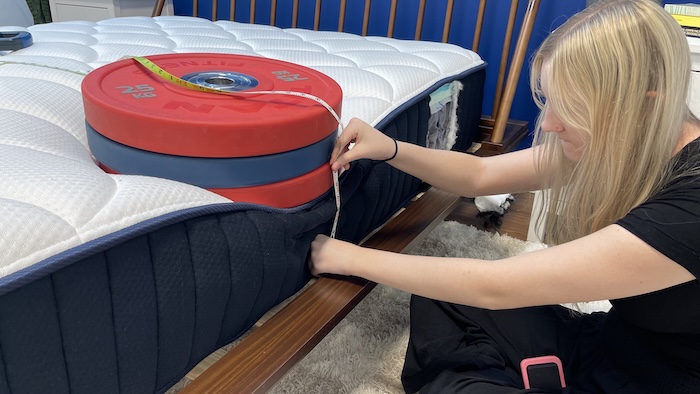
Next is the seated test, where our tester sits on the edge of the bed with their feet on the floor and stands up several times. They pay attention to how supported they feel and whether or not they’re about to fall off. If they can sit down and stand up with ease, the bed may have strong edge support.
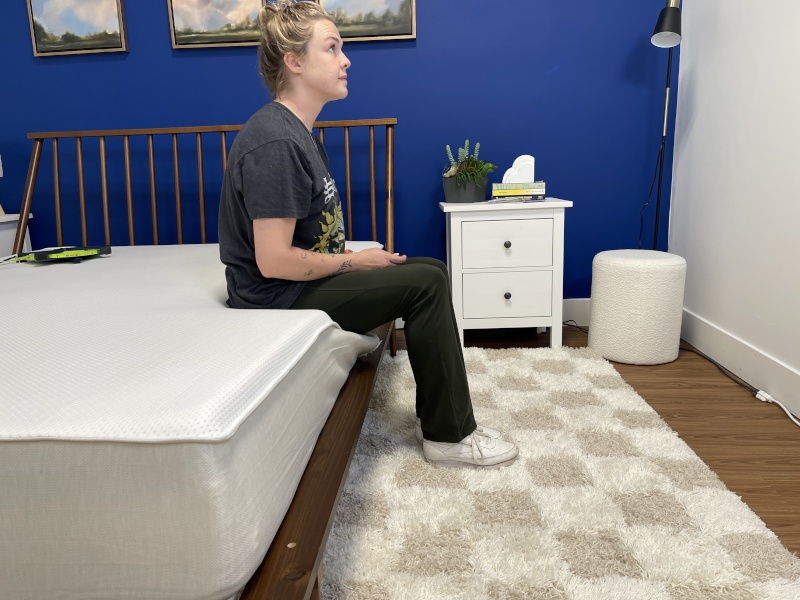
Finally, our tester lies down directly on the edge of the bed in the back, side, and stomach-sleeping positions and observes their stability. Once again, strong edge support means they don’t feel like they’re going to fall off.
Sinkage and Responsiveness
And finally, it’s crucial to a test a bed’s sinkage and responsiveness. Sinkage refers to how much you’re likely to sink into a mattress, while responsiveness shows how easily you can move around on it.
First is the bounce test, where we drop a 25-pound steel ball onto a mattress from 6 feet up and use a yardstick on the wall to measure how high it bounces. High bounce usually indicates high responsiveness, although we like to confirm it with a couple more tests.
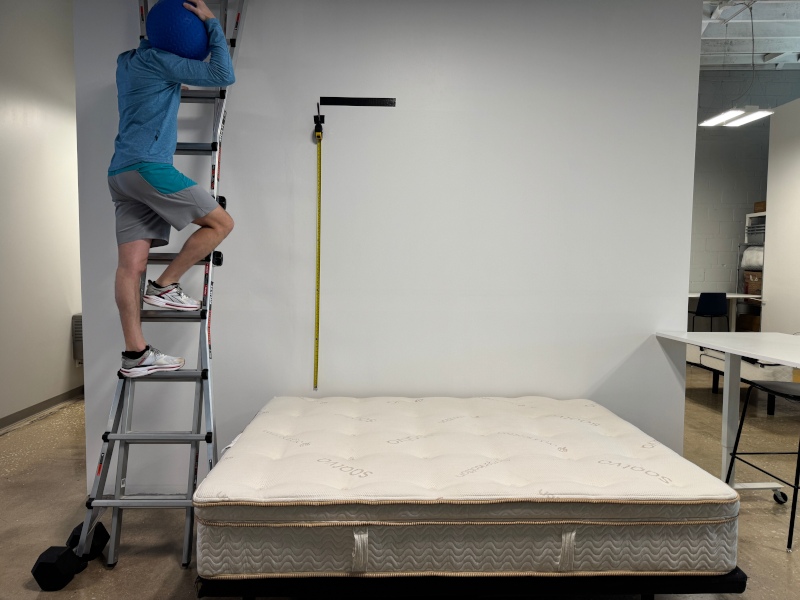
There’s the switch test, which is pretty simple. One of our testers lies on the mattress and switches from their back to their side to their stomach, observing how easy it was to transition. If it’s easy to move around, that means the mattress is probably a good fit for combination sleepers (i.e, people who switch sleeping positions at night).
For our official responsiveness test, we place a 53-pound kettlebell on the bed for 7 seconds, then lift it up. If it takes more than a few seconds to return to its original shape, the bed has a slow response to pressure and probably won’t help spring the sleeper from one position to the next.
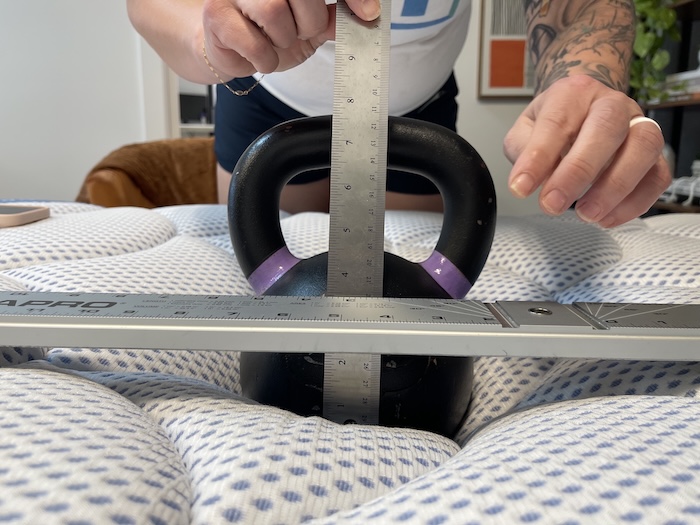
For our sinkage test, we once again take the kettlebell and place it in the center of the bed. We use a ruler to measure how far it sinks. We classify sinkage over 4 inches as “deep sinkage,” meaning you’ll likely feel more “in” the bed than “on” it.
After we get the above results, we can see whether you’re more likely to feel as if you’re sleeping “on top” of the bed or “in” it. We can also see how easily it’ll be for combo sleepers to change sleeping positions in the night.
Sheet Reviews
Sure, most sheets look great when they’re fresh out of the package… but how are you supposed to know which sheets are best for you just by looking at them? To figure that out, we turned to our accessories expert Amelia Jerden, who shared her method for assessing the quality of new sheets.
For her, it really comes down to three main factors: Materials, feel, and temperature. She also always makes sure to consider the care instructions. Below, you’ll get an idea of her step-by-step process for analyzing each of these factors.
Materials
Amelia says she likes to start by looking at the materials. Here she looks at what fabrics are used, the thread-count of the sheets, the weave, how the fabrics are made and processed, and whether or not they’re organic.
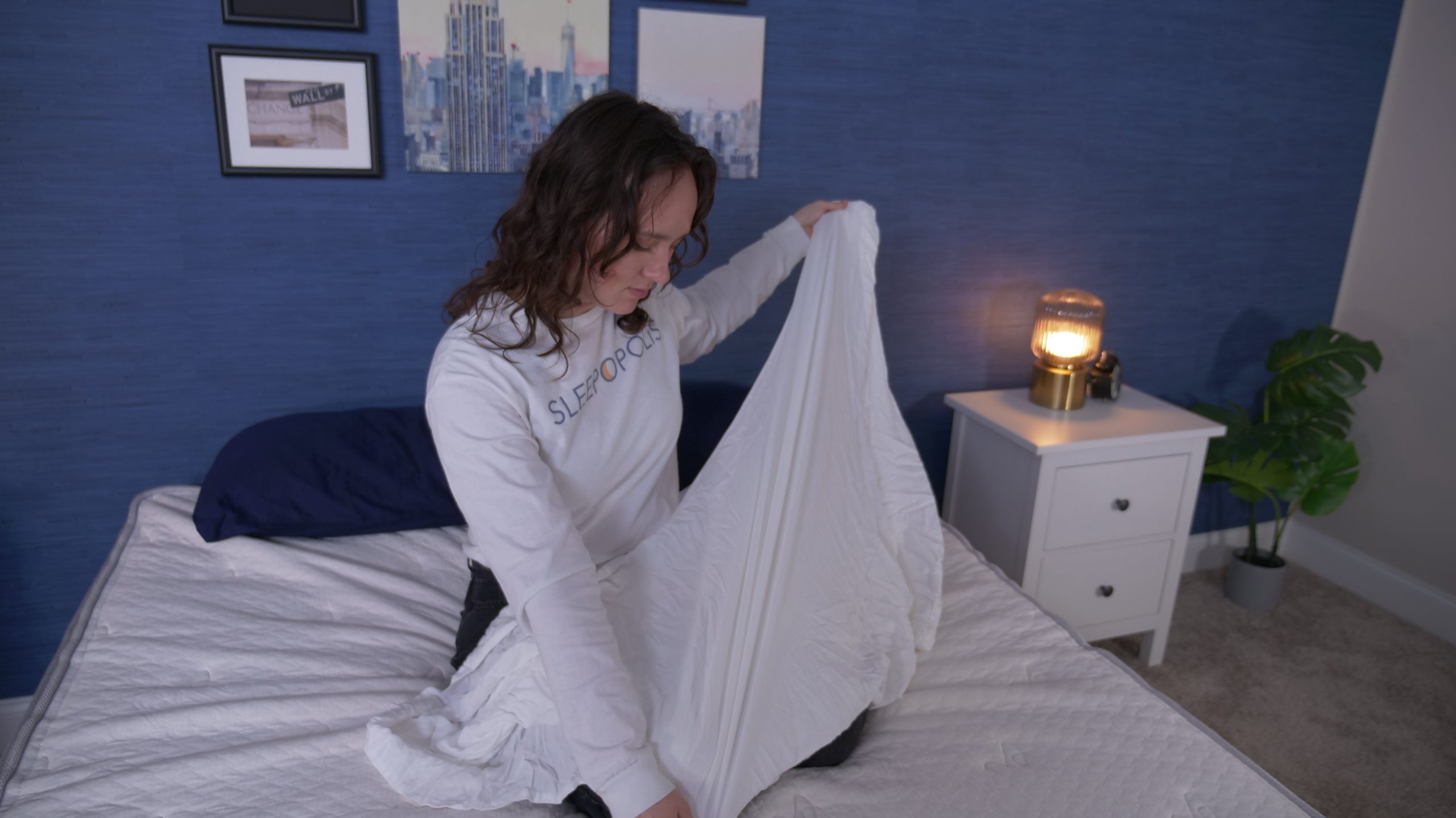
Feel
Once Amelia feels she has the materials down, she then likes to assess the feel of the fabrics. Sheets can feel extremely different based on their materials. Some are going to feel soft, smooth, silky, rough, crisp, or even airy. To further test the feel out, Amelia will lay under them and see if they cling to her body or if they’re lightweight.
When she’s testing weighted blankets, she likes to let our readers know if it’s a fuzzy, furry, or fluffy material — or if it’s more smooth and soft.
“I try to be really specific to give an idea of what exactly it feels like,” says Amelia.
Amelia says she also likes to see if the bedding will have a tendency to easily wrinkle, along with what color options you have when ordering.
And while looks aren’t everything, some people do prefer their sheets to look a certain way. Our pro tip: If you prefer a lustrous sheen, aim for sateen. If you like a solid matte look, try percale. For more on the differences between the two finishes, check out our full Sateen vs. Percale sheets guide.
Temperature
After Amelia’s tested the materials and feel, she looks to the temperature. We all have our preferences when it comes to sleeping cool or warm, so the temperature can be a deal breaker for some people.
In order to get an idea of temperature, Amelia starts by assessing the weight of the material. If it’s a thick, heavy fabric, it’s probably not going to be cooling. But if it’s light and airy, that’s a better indicator they will be. Then, she looks at the materials. She says in general, cotton is very breathable, Tencel is breathable and moisture wicking, and synthetic fabrics are usually not breathable. To really bring this test home, she literally brings the sheets home and sleeps with them to see if they keep her warm or cool.
Another pro tip: If you’re prone to night sweats, check out materials like bamboo, Tencel, and other fabrics known for their moisture-wicking capabilities.
Pillow Reviews
Amelia doesn’t just test out sheets and weighted blankets — she’s also our go-to pillow expert. Though sleepers can get extra picky about their pillows, Amelia says there are a few general characteristics to consider when testing out a new pillow: Loft, firmness, and materials.
Loft
The loft refers to the height of a pillow, and lets Amelia know which body types and sleep positions will be the most compatible with a specific pillow.
Here’s what typically works best for certain sleepers:
- High Loft (6+ inches) – Ideal for side sleepers or folks with broader shoulders as it helps to relieve pressure at the neck and keep the head in neutral alignment with the spine.
- Medium Loft (4-5 inches) – A good zone for back sleepers as it keeps the head lifted, but not so aggressively that it causes the neck to crane out of position.
- Low Loft (2-3 inches) – This last category is best suited for stomach sleepers as it helps to prevent the upper body from dipping out of alignment with the hips.
However, Amelia says it’s ok to change up your loft based on your personal preference.
“For example, I almost always like my pillows a little lower in loft than average, even though I’m a back sleeper,” she says.
Firmness
As with mattresses, the firmness of a pillow can make or break it for certain sleepers. Amelia says she likes to determine firmness by first feeling the pillow. She’ll check how easy it is to press into it, how much her head sinks into it, and whether it conforms around her head.
“A soft pillow would be like a traditional down pillow,” says Amelia. “Most of the ones I review are around medium, and firm might be a solid block of foam.”
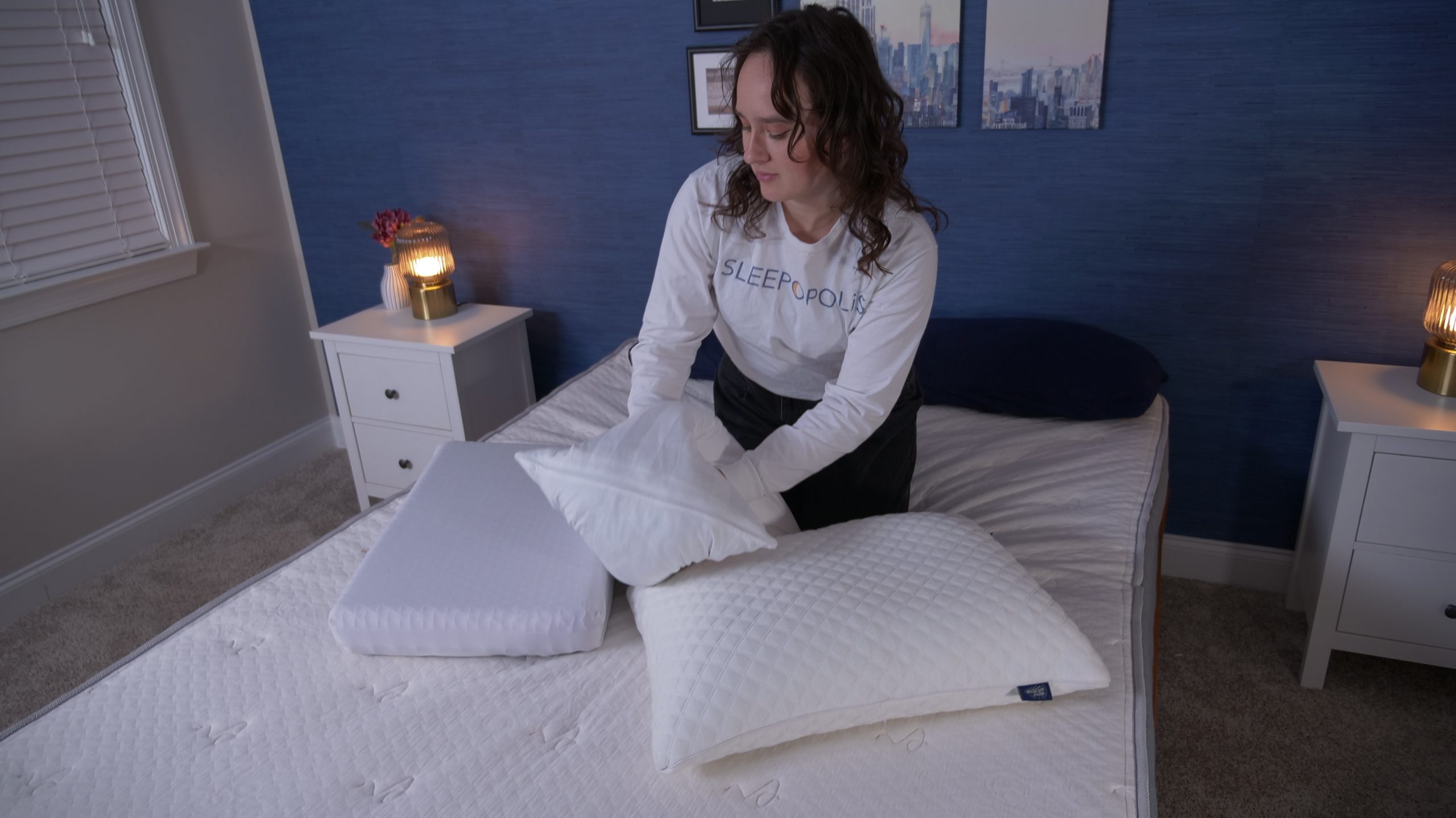
Materials
To round out her reviews, Amelia dives into a pillow’s materials. She says the materials can really alter the feel of a pillow and can also be a good indicator of its cooling capabilities.
There are a lot of materials you can come across with pillows, like shredded foam, solid foam blocks, latex, down, and fiber fill down alternatives (just to name a few). They all have different feels and will offer different amounts of support, bounce, and conforming.
A quick tip from Amelia: Anything that uses latex will likely be pretty cooling. Anything with a shredded fill will do well for allowing airflow.
She also points out what the pillow covers are made of can help with cooling — is it a breathable cover or is it all synthetic materials? Of course, you can find those answers in her reviews.
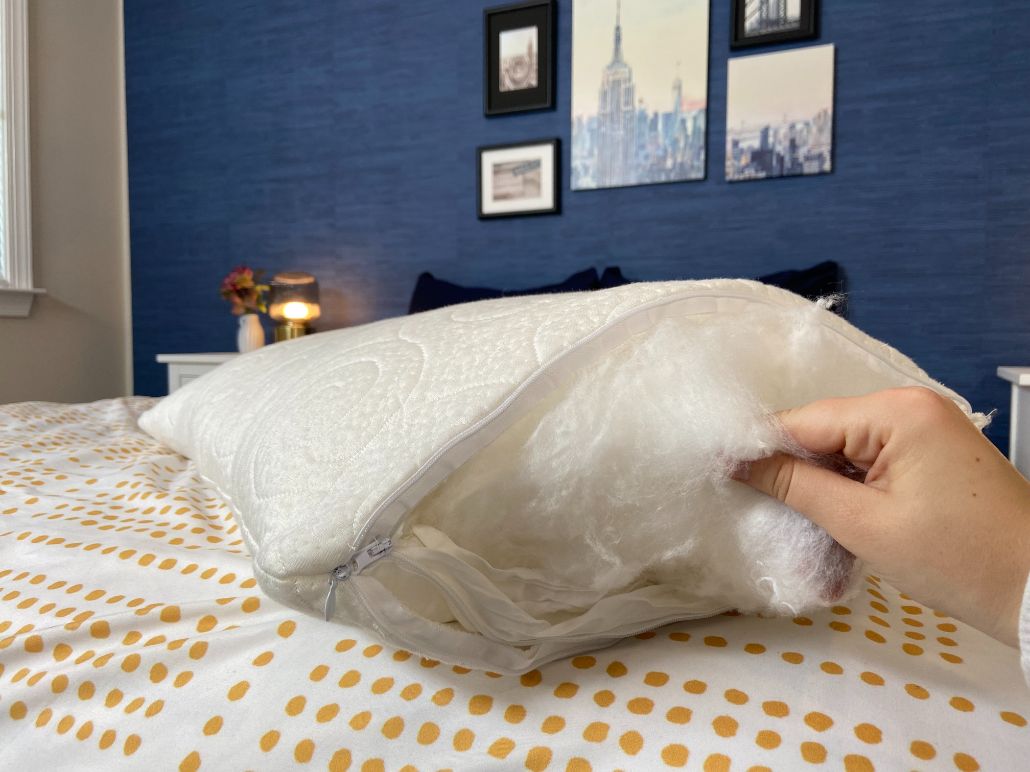
Other Products
Though the bulk of our reviews center around mattresses, pillows, and bedding, we pride ourselves on testing out a diverse range of sleep accessories, including eye masks, blackout curtains, sleep trackers, bed cooling and heating devices, adjustable frames, and night lights. We’re always looking for the latest, greatest sleep technology to test out and see if it really works.
While each product category calls for a unique review methodology, there are a few questions we try to answer with every single item:
- Functionality – Does the product work? If so, how can we demonstrate the full scope of its functionality? For an eye mask, it might involve rolling around in multiple positions while wearing it to test its wearability. For blackout curtains, it could entail multiple tests in different rooms with different amounts of light.
- User-friendliness – If we can assess that a product is functional, we’ll then work to figure out its use-ability. Is the remote with the adjustable frame easy to read or are the buttons too complicated? Does the sleep tracker sync automatically with your smartphone or does it require another device? Ultimately, this good needs to add something to your life without too much fuss, so these questions help us to better understand the user experience you’ll likely have.
- Value – And finally, we come to value i.e. is this product worth the money? Answering this question is as subjective as any of the others we pose, so it’s not about us providing a simple yes or no; rather, it’s about us giving you all the information you need to decide if it’s going to be a worthwhile purchase for yourself.





























